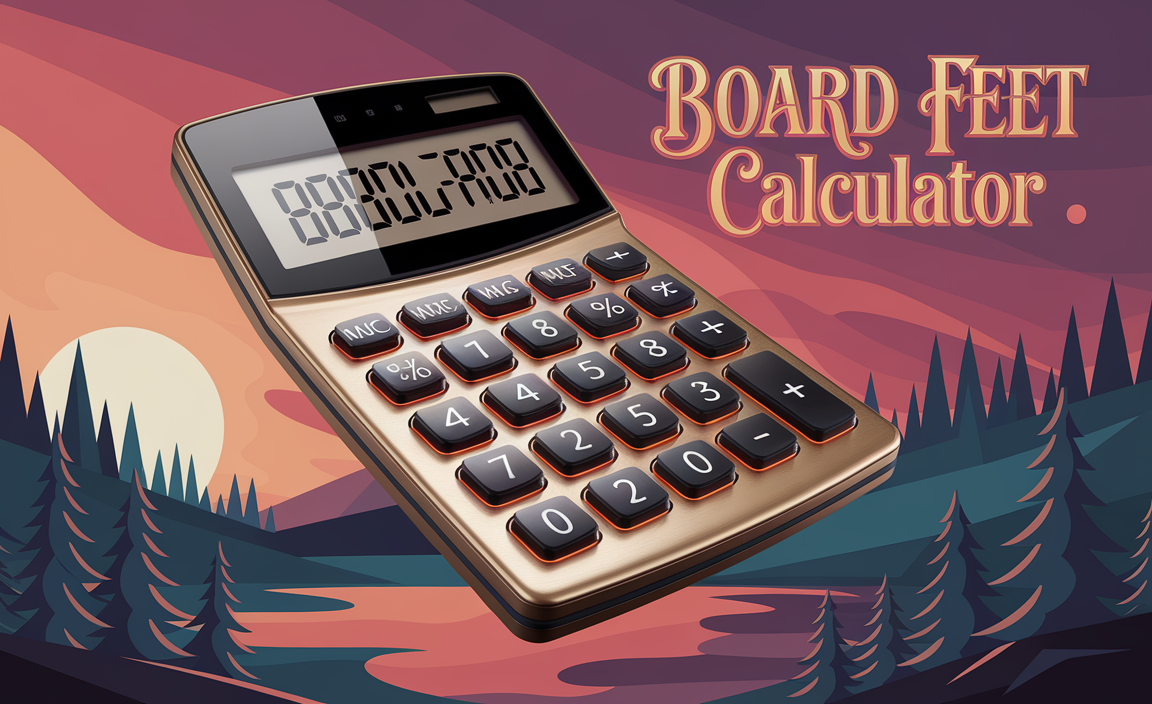Cordless nail guns offer freedom from hoses and compressors, making projects faster and more convenient. Our essential guide and comparison chart help beginners choose the best one for their needs, ensuring a successful DIY experience.
Hey DIYers! Ever get tangled up in air hoses or lug around a noisy compressor for your nailing projects? It can really slow down your work and add a lot of hassle. Choosing the right cordless nail gun can seem a bit much when you first start looking. There are so many types and features! But don’t worry, I’m here to help you cut through the noise. We’ll break down exactly what you need to know, so you can pick a nail gun that feels just right for you and your projects. Get ready to nail it!
Table of Contents
Why a Cordless Nail Gun is a Game-Changer for DIYers
Cordless nail guns have seriously leveled up the DIY game. They give you the power of a nail gun without the annoying cords or the need for an air compressor. This means you can take your project anywhere – up on a ladder, out in the yard, or even to a different room without dragging equipment. It’s all about convenience and getting more done, faster and with less fuss. For many of us tackling home improvement projects, this freedom is a huge deal.
Understanding the Different Types of Cordless Nail Guns
Before we dive into a comparison chart, it’s important to know the main players. Cordless nail guns come in a few flavors, each designed for specific jobs. Think of them as specialized tools for different tasks:
1. Brad Nailers
These are your go-to for delicate trim work, molding, and smaller projects where you don’t want to split the wood. Brad nails are thin and leave a very small hole, making them easy to hide.
- Ideal for: Baseboards, crown molding, window and door casing, decorative trim.
- Nail size: Typically 18-gauge.
2. Finish Nailers
Finish nailers are a step up from brad nailers. They use slightly thicker nails (16-gauge usually) that offer more holding power. They’re great for attaching larger trim pieces, chair rails, and other woodworking projects where you need a bit more strength but still want a nail head that’s easy to conceal. You’ll often need to fill the small nail holes with wood putty before painting or staining.
3. Framing Nailers
These are the heavy-duty workhorses. Framing nailers are designed for structural projects like building decks, framing walls, and constructing fences. They use larger, thicker nails (like 10d or 12d common nails) that provide serious holding power to create strong, lasting structures. They can be a bit bulkier but are essential for any serious construction.
4. Roofing Nailers
5. Pin Nailers (or Pinner Nailers)
These are the smallest and most delicate. Pin nailers use tiny headless nails – so small, you can barely see them! They’re perfect for holding delicate trim pieces in place while glue dries, or for very fine decorative work where you don’t want any visible nail marks at all.
The Technology Behind Cordless Nail Guns
Cordless nail guns rely on a few different power sources to drive the nail:
- Battery-Powered (Direct Drive): These use a powerful electric motor and an internal air cylinder to drive the nail. They offer consistent power and don’t require fuel cells.
- Fuel Cell Powered (Hybrid): A combination of a small, disposable fuel cell (like propane or butane) and a rechargeable battery. The battery ignites the fuel, creating a burst of gas that drives the piston and nail. These can be more powerful, especially for framing, but require purchasing fuel cells.
For most DIYers starting out, the convenience and simplicity of battery-powered models are hard to beat. They’re generally easier to maintain and don’t have the recurring cost of fuel cells.
What to Consider When Choosing a Cordless Nail Gun
Picking the right nail gun is like picking the right tool for any job. Think about these key factors:
- Your Projects: What will you be doing most often? Trim work calls for a brad or finish nailer. Framing a deck needs a framing nailer.
- Power Source: Are you already invested in a specific tool brand’s battery system? Sticking with one brand can save you money on batteries and chargers.
- Weight and Balance: You’ll be holding this tool. A lighter, well-balanced nail gun will be more comfortable for long jobs.
- Depth Adjustment: Can you easily control how deep the nail goes into the wood? This is crucial for countersinking nails without damaging the surface.
- Nail Jam Clearing: How easy is it to clear a jammed nail? A quick-release mechanism is a lifesaver.
- Single vs. Sequential Firing: Single fire is precise and safe for detailed work. Sequential fire is faster for quick nailing. Many have dual-action triggers.
- Price: Cordless nail guns can range from fairly affordable to high-end. Set a budget that makes sense for your needs.
Cordless Nail Gun Comparison Chart for Carpenters and DIYers
Here’s a handy chart to help you compare some popular types of cordless nail guns. Keep in mind that specific models will vary, but this gives you a solid overview of what to expect in each category.
| Feature | Cordless Brad Nailer (18-Gauge) | Cordless Finish Nailer (16-Gauge) | Cordless Framing Nailer (e.g., 15-Gauge) | Cordless Pin Nailer (23-Gauge) |
|---|---|---|---|---|
| Best For | Light trim, molding, delicate jobs. | Larger trim, window/door casing, cabinet installation. | Structural framing, decks, fences, sheds. | Holding trim while glue dries, headless nailing. |
| Nail Size (Gauge) | 18 | 15 or 16 | 8–12 (common nails) or 13-15 (brad-like framing) | 23 |
| Holding Power | Low to Medium | Medium | High | Very Low (primarily for positioning) |
| Nail Head Size | Small, easily concealed. | Small, can require filling. | Full head, strong hold. | No head, invisible. |
| Typical Weight | 4-6 lbs | 5-7 lbs | 8-10+ lbs | 2-4 lbs |
| Power Source | Battery-powered or Fuel cell. | Battery-powered or Fuel cell. | Battery-powered or Fuel cell. | Battery-powered. |
| Common Trigger Modes | Single, Sequential, Bump. | Single, Sequential, Bump. | Single, Sequential, Bump. | Single, Sequential. |
| Cost (Tool Only) | $100 – $250+ | $120 – $300+ | $200 – $500+ | $80 – $200+ |
| Pros | Versatile for interior trim, portable freedom. | Good balance of holding power and finish quality. | Powerful for structural work, no compressor hassle. | Invisible fastening, precise for delicate work. |
| Cons | Not for structural loads. | Nail holes may need filling. | Heavy, more recoil, can be overkill for small jobs. | Very little structural holding power. |
Note: The “Framing Nailer” category often includes nails that are similar in size to finish nails but are used for framing applications where a bit more strength is needed than a standard finish nailer provides. True framing nailers use much larger nails.
Setting Up Your Cordless Nail Gun for Success
Once you’ve chosen your nailer, the next step is getting it ready. It’s usually pretty straightforward, but here’s a quick rundown:
- Charge Your Battery: Make sure your battery is fully charged before you start. Nothing stops a project faster than a dead battery!
- Load the Nails: This varies by model, but you’ll typically slide the nails into a magazine. Make sure you’re using the correct size and type of nail for your gun. Using the wrong nails is a recipe for jams and damage. Check your manufacturer’s guide for specific loading instructions.
- Adjust Depth Setting: Before you fire your first nail, test it on a scrap piece of wood. Adjust the depth setting so the nail head is flush with or slightly below the surface. You don’t want nails sticking out or sinking too deep into the material.
- Select Firing Mode: If your nailer has multiple modes (single or sequential fire), choose the one that suits your immediate task. For detailed work, single fire is safer and more precise. For faster fastening, sequential fire is your friend.
Safety First: Essential Tips for Using Your Cordless Nail Gun
Nail guns are powerful tools, and safety should always be your top priority. Here are key safety tips:
- Never point the nail gun at yourself or others. Keep your fingers away from the nose and trigger.
- Always wear safety glasses. Flying debris or ricocheting nails can cause serious eye injury. A pair of OSHA-compliant safety glasses is a must.
- Keep guards and safety features in place. Don’t tamper with the safety contact tip. It prevents accidental firing.
- Do not use the nail gun if it is damaged. Inspect it regularly for any signs of wear or tear.
- Disconnect the power source (battery) when not in use, especially when loading or clearing jams.
- Be aware of your surroundings and ensure no one is behind the work surface where a nail could pass through.
- Read your owner’s manual! Every tool is a little different, and the manual has specific safety and operating instructions for your model.
Real-World Cordless Nail Gun Use Cases
Let’s put these nailers to work with some common DIY scenarios:
- Installing Baseboards and Crown Molding: A cordless 18-gauge brad nailer is perfect here. It drives thin nails that won’t split your delicate molding, and the small holes will be easy to fill and paint over.
- Building a Bookshelf or Small Cabinet: A 16-gauge cordless finish nailer will provide enough holding power for the assembly, especially when used with wood glue. It offers a cleaner finish than a framing nailer.
- Framing a Small Deck or Garden Shed: This is where a cordless framing nailer shines. It drives larger nails quickly and efficiently, providing the structural integrity needed for outdoor projects. This is a significant upgrade from manually hammering nails for such tasks.
- Attaching Thin Decorative Wood Strips: A cordless pin nailer is ideal for any situation where you need to hold tiny pieces of wood together temporarily while glue dries or to attach very thin decorative elements without leaving visible marks.
Maintenance for Longevity
To keep your cordless nail gun running smoothly for years, a little maintenance goes a long way:
- Keep it Clean: Wipe down your nail gun after each use to remove dust and debris. Pay attention to the nosepiece.
- Lubrication (if applicable): Some older or specific models might require occasional lubrication. Always refer to your user manual for specific instructions on whether your tool needs oil and how to apply it. Newer battery-powered models often require very little to no lubrication.
- Battery Care: Store batteries in a cool, dry place, and avoid extreme temperatures. Follow the manufacturer’s guidelines for charging to maximize battery lifespan.
- Clear Jams Promptly: Don’t force a jammed nailer. Follow the instructions in your manual to clear jams safely and quickly. Repeated jams can indicate a problem that might need professional attention.
Frequently Asked Questions (FAQ)
Q1: Do cordless nail guns have the same power as pneumatic ones?
Generally, high-end cordless framing nailers are getting very close in power to pneumatic tools, especially those using fuel cells. For detail and finish work, cordless nailers are often indistinguishable in power. However, very heavy-duty framing with very large nails might still perform slightly better with a powerful compressor and pneumatic gun.
Q2: What are the best cordless nail gun brands for DIYers?
Some of the most trusted brands for cordless nail guns include DeWalt, Makita, Milwaukee, Ryobi, and Craftsman. The “best” often depends on your budget, whether you’re already invested in a specific battery platform, and the specific features you prioritize.
Q3: Can I use my cordless nail gun in cold weather?
Battery performance can be reduced in very cold temperatures. For battery-only models, it might feel a bit less powerful. For fuel cell models, the fuel can also be affected by extreme cold, potentially reducing power or causing misfires. It’s best to use them within the temperature ranges recommended by the manufacturer.
Q4: How often do I need to replace the fuel cell in a hybrid nailer?
The lifespan of a fuel cell varies depending on the nail gun model and how frequently it’s used. Typically, one fuel cell can drive between 700 to 1,200 nails. You’ll know it’s time to replace it when the tool starts to lose power.
Q5: Do I need one of each type of cordless nailer?
Not necessarily! For many basic DIYers, a good 18-gauge brad nailer or a 16-gauge finish nailer might cover 80% of your needs, especially for interior finishing. If you plan on building decks, fences, or tackling structural projects, a framing nailer becomes essential. You can always start with one key tool and add others as your projects evolve.
Q6: What’s the difference between 15-gauge and 16-gauge finish nailers?
A 15-gauge nail is slightly thicker than a 16-gauge nail. This means a 15-gauge nailer will offer a bit more holding power and leave a slightly larger hole that might be more noticeable than a 16-gauge nail hole, but both are generally considered finish nailers and are great for trim work where nail size is critical. The choice often comes down to tool availability and slight preference.
Conclusion: Empowering Your Projects with the Right Nail Gun
Choosing a cordless nail gun doesn’t have to be a complex puzzle. By understanding the different types, considering your typical projects, and knowing what features matter most, you can confidently select a tool that will make your DIY endeavors smoother, faster, and more enjoyable. Whether you’re adding decorative trim, building a new shelf, or tackling a larger framing project, there’s a cordless nail gun out there ready to help you get the job done right. Embrace the freedom, prioritize safety, and happy building!





